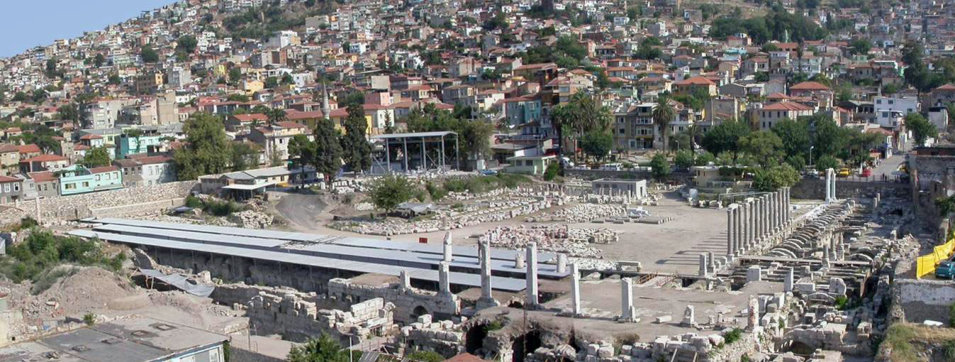
Izmir, Turkey - The Agora

Aerial View, Courtesy Ms. Funda Yaka
Welcome
The Agora At Izmir, Turkey
Background
The word "Agora" is of Greek origin, and translates roughly to "marketplace," an open space in a town where people gather, especially as a marketplace in ancient Greece. Located in a section of Izmir, Turkey called "Konak," you will find the remains of a marketplace built by order of Alexander the Great, probably in the 2nd century BC. The Agora was initially excavated by a joint German and Turkish team during the period of 1932 to 1941. It is one of the only surviving pre-Ottoman monuments, although what remains is said to be of the reconstruction by the Romans after a devastating earthquake. You will find Corinthian columns, vaulted chambers, and hundreds of Ottoman graveyards in the eastern section. The Agora, as discovered in 1932, measured approximately 262 x 394 feet. There stood a two story stoa (a covered walkway of ancient Greece, usually having a row of columns on one side with a wall on the other) decorated with two rows of columns on the eastern and western facades. The northern side of the Agora was approximately 92 feet wide. Beneath the columns to the north are numerous stylobates (basement supporting columns of masonry, a continuous raised platform of masonry supporting a row of columns) upholding the arches. On the western portico a section 236 feet long with gates has been discovered. The Agora was apparently a three-story structure with a central courtyard paved in marble. The Agora’s top story is missing as of the date of these photos, taken in 1961. The Agora was destroyed by an earthquake in 178 AD, but was reconstructed by Marcus Aurelius, Emperor of Rome from 161 to 180 AD. There have been found portraits on the western arches of Marcus Aurelius and of his wife Faustina (who was said to have played a major role in the reconstruction) that would give credence to this story. Ancient authors have indicated that an altar dedicated to Zeus stood in the middle of the Agora in 150 AD. As you view and study these artifacts, you will see a mixture of Roman, Greek, and Ottoman cultural influences. Gods (Zeus, Poseidon, etc.) from both Roman and Greek cultures were to be found at the Agora. The photos dated 1961 were taken by George L Smith, while living and working in Turkey. A special aerial photo view of the Agora at Izmir, provided by Ms. Funda Yaka of Izmir and located at the top of this page, is available in a high resolution format of 1240x617 pixels. Other photos donated by Ms. Yaka were taken around July of 2005. My visit to the Agora took place in 1961-1962 while living in Izmir, the son of a career U. S. Army father who was stationed in Izmir with TUSLOG. I had befriended the owner/operator of the Mithat Pasha Fotograph Studio which was located on the first floor of our apartment building. Zefer, a friend of his, offered to take me on a tour of the Agora…which I promptly accepted. After that initial tour, I returned several times with others…spending countless hours inspecting the old statues, the absolutely wonderful construction techniques, the wonder of which has never ceased to this day. My understanding is that some of the artifacts have been moved to another facility…apparently indoors perhaps, for protection from the elements.
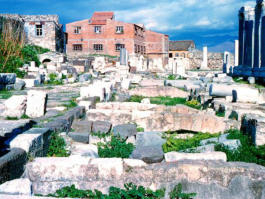

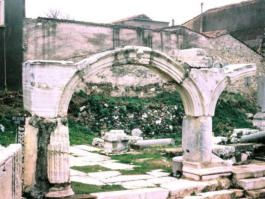

A beautiful photo
Line of sub text

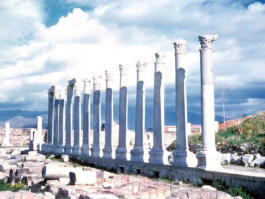

A beautiful photo
Line of sub text

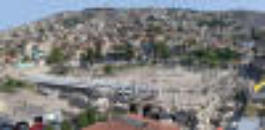
Updated: 12/11/2022 09:37
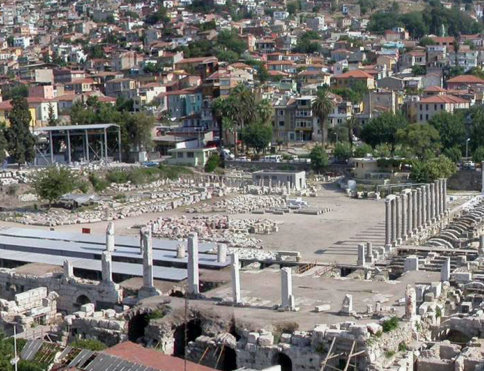
Welcome
The Agora At Izmir, Turkey
Background
The word "Agora" is of Greek origin, and translates roughly to "marketplace," an open space in a town where people gather, especially as a marketplace in ancient Greece. Located in a section of Izmir, Turkey called "Konak," you will find the remains of a marketplace built by order of Alexander the Great, probably in the 2nd century BC. The Agora was initially excavated by a joint German and Turkish team during the period of 1932 to 1941. It is one of the only surviving pre-Ottoman monuments, although what remains is said to be of the reconstruction by the Romans after a devastating earthquake. You will find Corinthian columns, vaulted chambers, and hundreds of Ottoman graveyards in the eastern section. The Agora, as discovered in 1932, measured approximately 262 x 394 feet. There stood a two story stoa (a covered walkway of ancient Greece, usually having a row of columns on one side with a wall on the other) decorated with two rows of columns on the eastern and western facades. The northern side of the Agora was approximately 92 feet wide. Beneath the columns to the north are numerous stylobates (basement supporting columns of masonry, a continuous raised platform of masonry supporting a row of columns) upholding the arches. On the western portico a section 236 feet long with gates has been discovered. The Agora was apparently a three-story structure with a central courtyard paved in marble. The Agora’s top story is missing as of the date of these photos, taken in 1961. The Agora was destroyed by an earthquake in 178 AD, but was reconstructed by Marcus Aurelius, Emperor of Rome from 161 to 180 AD. There have been found portraits on the western arches of Marcus Aurelius and of his wife Faustina (who was said to have played a major role in the reconstruction) that would give credence to this story. Ancient authors have indicated that an altar dedicated to Zeus stood in the middle of the Agora in 150 AD. As you view and study these artifacts, you will see a mixture of Roman, Greek, and Ottoman cultural influences. Gods (Zeus, Poseidon, etc.) from both Roman and Greek cultures were to be found at the Agora. The photos dated 1961 were taken by George L Smith, while living and working in Turkey. A special aerial photo view of the Agora at Izmir, provided by Ms. Funda Yaka of Izmir and located at the top of this page, is available in a high resolution format of 1240x617 pixels. Other photos donated by Ms. Yaka were taken around July of 2005. My visit to the Agora took place in 1961- 1962 while living in Izmir, the son of a career U. S. Army father who was stationed in Izmir with TUSLOG. I had befriended the owner/operator of the Mithat Pasha Fotograph Studio which was located on the first floor of our apartment building. Zefer, a friend of his, offered to take me on a tour of the Agora…which I promptly accepted. After that initial tour, I returned several times with others…spending countless hours inspecting the old statues, the absolutely wonderful construction techniques, the wonder of which has never ceased to this day. My understanding is that some of the artifacts have been moved to another facility…apparently indoors perhaps, for protection from the elements.
© www.hlswilliwaw.com
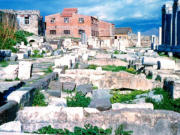

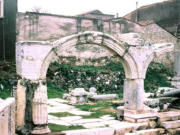


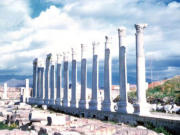


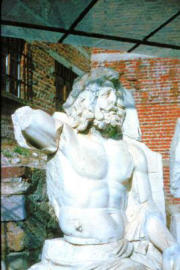
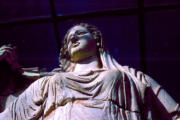
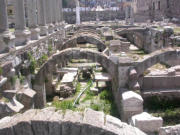
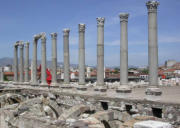
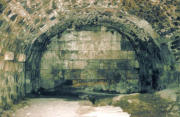
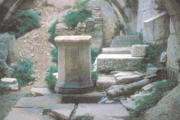
Izmir, Turkey - The Agora



















